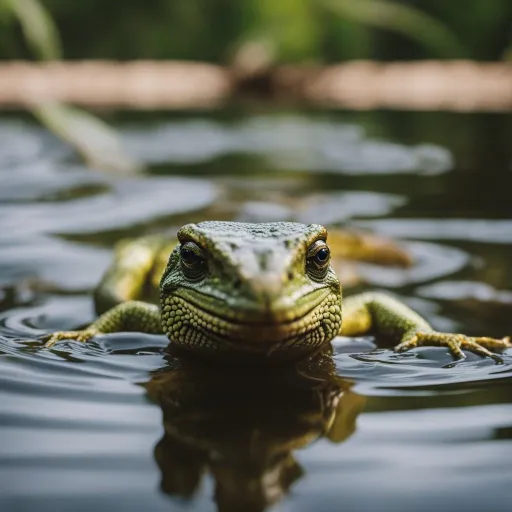You’ve probably noticed those fascinating creatures scurrying across your backyard, effortlessly blending into their surroundings.
But have you ever wondered what backyard lizards eat and drink? In this article, we’ll uncover the dietary preferences of these small reptiles and explore the fascinating world of their meal choices.
So, let’s satisfy our curiosity and discover what satisfies theirs!
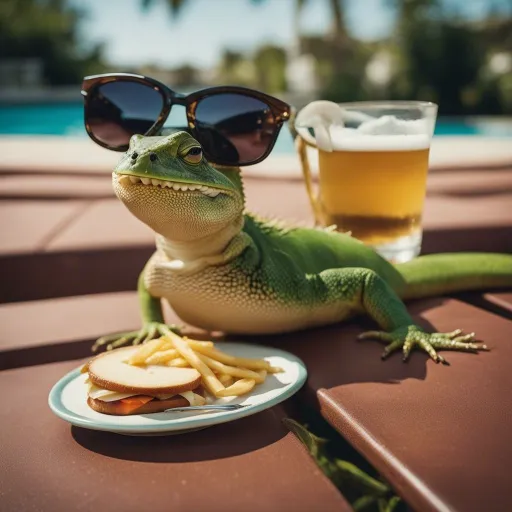
Feeding Habits of Backyard Lizards
Backyard lizards are fascinating creatures, and understanding their feeding habits is crucial to ensure their health and well-being. These reptiles primarily consume insects, making them essential pest controllers in your garden. Additionally, backyard lizards may occasionally include small vertebrates in their diet. Let’s explore their feeding habits in detail.
Insects as Primary Food Source
Insects form the primary food source for backyard lizards. These agile reptiles have a remarkable ability to catch a wide variety of insects, making them valuable allies in natural pest control. Lizards possess lightning-fast reflexes and use their sharp tongues to snatch up insects, such as crickets, grasshoppers, beetles, and moths. They are particularly helpful in controlling unwanted populations of garden pests like ants and mosquitoes.
Variety of Insects Consumed
Backyard lizards have a diverse diet when it comes to insects. They exhibit an opportunistic feeding behavior and consume various types of insects based on availability. Apart from the aforementioned insects, they also prey on flies, spiders, caterpillars, and even smaller species like mites and aphids. This broad range of insects helps fulfill their nutritional requirements and ensures a balanced diet.
Occasional Consumption of Small Vertebrates
While insects make up the majority of their diet, backyard lizards occasionally consume small vertebrates. This includes small amphibians like frogs and tadpoles, as well as tiny reptiles such as baby snakes. It is important to note that this behavior is more common in larger lizard species, such as skinks and geckos. However, the consumption of small vertebrates is relatively infrequent and may vary depending on the lizard species and the availability of such prey.
Vegetation in the Diet
Contrary to popular belief, backyard lizards do not solely rely on insects for sustenance. Plants play a crucial role in their diet and provide essential nutrients. Let’s explore the importance of vegetation in the lizard’s diet and the types of plants they consume.
Importance of Plants in Lizard Diet
Plants are not only a supplementary food source for backyard lizards but also provide vital nutrients, vitamins, and minerals. Many plant species offer a significant amount of moisture to lizards, aiding in their hydration. In addition, certain plants provide dietary fibers that assist in digestion. Therefore, incorporating vegetation in the lizard’s diet is essential for their overall health and well-being.
Types of Vegetation Eaten
Backyard lizards are known to consume a variety of vegetation. This includes tender leaves, flowers, and even small fruits.
Some common plant species that lizards often include in their diet are dandelions, clover, hibiscus, and mulberry leaves.
They also indulge in small amounts of succulent plants like cacti, which offer hydration and vital nutrients.
It is important to ensure that the plants provided are safe and pesticide-free to prevent any harm to the lizards.
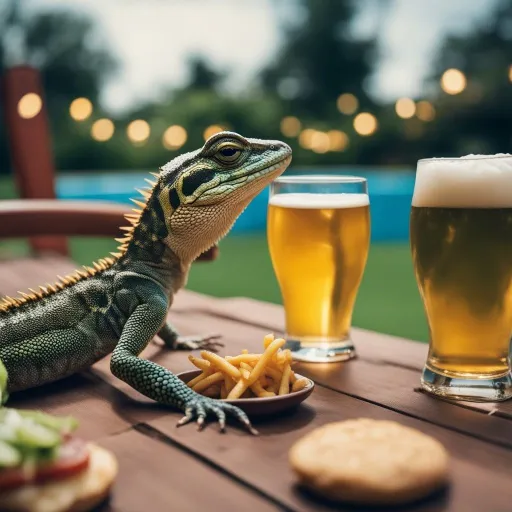
Water Requirements of Backyard Lizards
Just like any living creature, backyard lizards require water for survival. While they primarily obtain water from natural sources, providing additional watering techniques in your backyard can be beneficial. Let’s explore how backyard lizards fulfill their water requirements.
Obtaining Water from Natural Sources
Backyard lizards are resourceful when it comes to sourcing water. They often drink water droplets from leaves, dew on the grass, or rain puddles. Moreover, they absorb moisture through their skin while basking in the sun. Lizards have a specialized gland, known as the sublingual gland, which aids in water absorption. Their ability to extract water from natural sources is crucial, especially during periods of scarce water availability.
Watering Techniques in Backyards
To enhance the water availability for backyard lizards, you can incorporate watering techniques in your outdoor space. Providing shallow water dishes or small pools can attract lizards and offer them a reliable water source. It is important to keep the water clean and change it regularly to prevent the growth of harmful bacteria. Additionally, placing rocks or sticks near the water source can provide lizards with a safe and accessible spot to drink from.
Supplementary Food for Lizards
While backyard lizards have a diverse diet, certain supplementary foods can be provided to enhance their nutritional intake. Let’s explore some options for supplementing their diet.
Providing Live Insects
To ensure a varied diet for backyard lizards, you can offer live insects as a supplement. This can include worms, crickets, or even small roaches. Live insects not only provide additional nutrition but also stimulate the lizard’s natural hunting instincts, keeping them mentally and physically active. It is crucial to ensure that the insects provided are gut-loaded or fed with a nutritious diet before offering them to the lizards.
Commercial Lizard Diets
Commercial lizard diets are specially formulated food pellets that provide a balanced and convenient option for supplementing the lizard’s diet. These diets are designed to meet the nutritional requirements of lizards and often contain a combination of insects, fruits, and vegetables. However, it is important to remember that commercial diets should not replace the lizard’s natural diet but should be used as occasional treats or supplements.
Fruit and Nectar Treats
Certain types of fruits, such as bananas and berries, can be offered to lizards as occasional treats. These fruits not only provide essential vitamins and minerals but also add variety to the lizard’s diet. Additionally, some lizard species, like geckos, may be attracted to nectar. Offering diluted nectar or placing flowering plants in your backyard can be an enjoyable treat for these lizards.
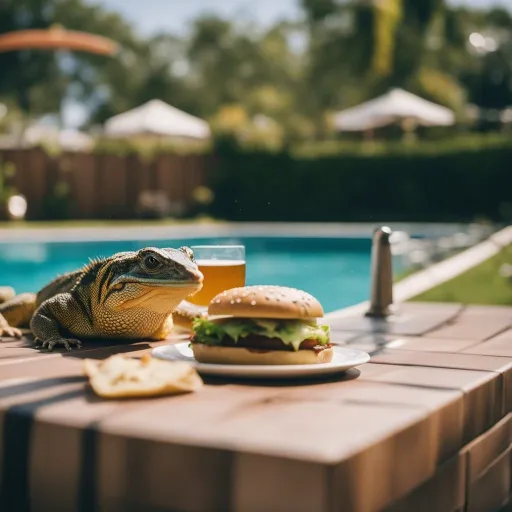
Factors Influencing Food Preferences
Several factors influence the food preferences of backyard lizards. These include availability, habitat type, age, and sex of the lizard. Let’s explore how these factors impact their feeding habits.
Availability
The availability of food plays a significant role in determining the diet of backyard lizards. Lizards are opportunistic feeders and will consume whatever prey is accessible to them. Their food choices can vary depending on the season, as different insects and plants may be more abundant during certain times of the year. It is important to note that if a particular food source becomes scarce, lizards may adapt their diet or even relocate to areas with better food availability.
Habitat Type
The habitat type of backyard lizards also influences their food preferences. Different lizard species have adapted to thrive in various habitats, such as forests, grasslands, or desert environments. These habitats offer different types of prey and vegetation, shaping the lizard’s diet accordingly. Understanding the natural habitat of the lizard species in your area can help in providing suitable food sources that mimic their natural diet.
Age and Sex
The age and sex of backyard lizards can also impact their food preferences. Juvenile lizards have higher nutritional requirements for growth and may consume a larger variety of insects compared to adult lizards. Additionally, the dietary preferences of male lizards may differ from those of females, especially during the breeding season. Providing a diverse range of food options can accommodate the varying nutritional needs of different age groups and genders.
The Digestive Process in Lizards
The digestive process in lizards is a complex and fascinating mechanism that allows them to extract nutrients from their food. Understanding the key digestive organs and unique behaviors associated with digestion is crucial in providing appropriate care for backyard lizards.
Key Digestive Organs
Backyard lizards possess key digestive organs that aid in the breakdown and absorption of nutrients. The stomach is responsible for the initial breakdown of food, while the pancreas and liver produce digestive enzymes and bile, respectively. These enzymes help break down proteins, carbohydrates, and fats, making them easier to absorb in the small intestine. The large intestine then absorbs water and ions before the waste is eliminated through the cloaca. The efficient functioning of these organs ensures proper digestion and nutrient absorption.
Regurgitation and Coprophagy
In addition to their digestive process, backyard lizards exhibit unique behaviors called regurgitation and coprophagy. Regurgitation occurs when lizards expel indigestible parts of their food, such as insect exoskeletons or plant fibers. This behavior allows them to maximize nutrient absorption by eliminating non-essential material. Coprophagy, on the other hand, involves the consumption of their own feces. While this behavior might seem unappealing, it allows lizards to extract additional nutrients from their waste, increasing their overall nutrient intake.
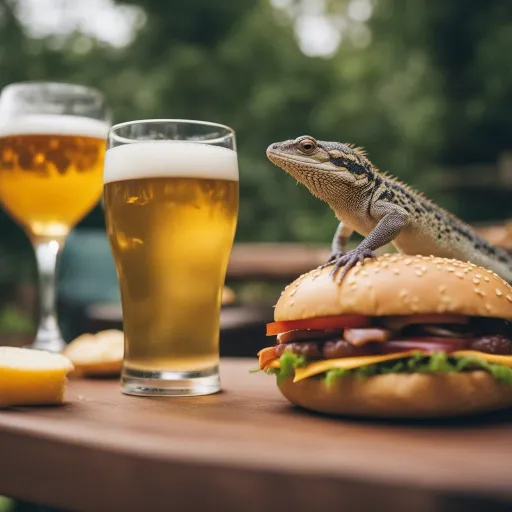
Feeding Behavior of Backyard Lizards
Understanding the feeding behavior of backyard lizards can give insights into their daily routines and preferences. Let’s explore their hunting techniques, foraging frequency, and territoriality in feeding.
Hunting Techniques
Backyard lizards employ various hunting techniques to catch their prey. Many lizard species are ambush predators, patiently waiting for insects or small vertebrates to come within striking distance. Once the prey is within reach, lizards use their lightning-fast reflexes to capture it with their sharp teeth or tongues. Some species may also actively pursue their prey, exhibiting a more active hunting behavior.
Foraging Frequency
The foraging frequency of backyard lizards depends on several factors, such as temperature, food availability, and energy requirements. Lizards are ectothermic, meaning their body temperature is regulated by external factors like sunlight. They tend to be more active and forage for food during warmer periods when their body temperature is optimal. Additionally, if food is abundant, lizards may forage less frequently but consume larger meals to fulfill their energy needs.
Territoriality in Feeding
Lizards can exhibit territorial behavior when it comes to feeding. They may defend an area rich in food resources, preventing other lizards from trespassing. This territoriality ensures a stable and reliable food supply for the defending lizard, especially during periods of scarcity. However, aggression and competition for food can occur between individuals, particularly during the breeding season or when resources are limited. Providing ample food sources in your backyard can reduce territorial conflicts among lizards and promote a healthy feeding environment.
Tips for Attracting Lizards to Your Backyard
If you enjoy observing and sharing your outdoor space with backyard lizards, here are some tips to attract them to your garden:
Providing Hiding Spots
Backyard lizards appreciate hiding spots where they can feel secure. This can include rock piles, logs, dense vegetation, or even specially designed lizard shelters. Creating these hiding spots not only offers lizards a safe haven but also encourages them to remain in your backyard and contribute to natural pest control.
Creating a Suitable Habitat
To attract lizards, it is important to create a suitable habitat that mimics their natural environment. This can be achieved by offering a mix of sunny and shaded areas, as lizards require both heat and cooler resting spots. Planting native vegetation, including diverse types of plants and flowers, provides lizards with food sources and shelter. Avoid using pesticides or harmful chemicals that can harm lizards and their food sources.
Enhancing Food Availability
To ensure a steady supply of food for backyard lizards, it is essential to enhance food availability. Planting a variety of insect-friendly plants can attract a diverse range of prey for lizards to feed on.
Additionally, incorporating bird feeders or providing suet for birds can attract insects and, in turn, draw lizards to your yard.
Offering shallow water dishes and maintaining a clean, accessible water source is also crucial in attracting lizards.
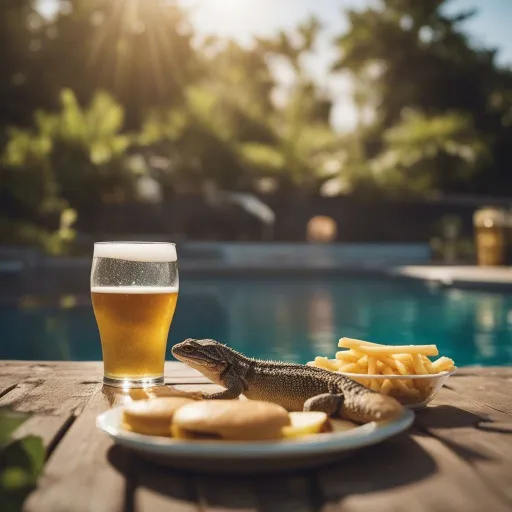
Common Backyard Lizard Species and Their Diets
Backyard lizards vary in species and have different dietary preferences. Let’s explore some common backyard lizard species and their typical diets:
Green Anoles
Green anoles are popular backyard lizards known for their ability to change color. Their diet primarily consists of insects, including ants, beetles, crickets, and small spiders. They occasionally consume smaller lizards and tree frogs.
Eastern Fence Lizards
Eastern fence lizards, also known as “blue belly lizards,” feed primarily on insects and spiders. They are particularly fond of ants, beetles, and grasshoppers. These lizards are also known to consume small fruits and flower nectar.
Skinks
Skinks are a diverse group of lizards that can be found in many backyards. They predominantly feed on insects, including beetles, caterpillars, grasshoppers, and spiders. Skinks may also consume small fruits and berries.
Geckos
Geckos are known for their unique ability to climb walls and ceilings. These nocturnal lizards feed on a variety of insects, such as moths, crickets, cockroaches, and beetles. Geckos may also be attracted to nectar and occasionally consume small vertebrates.
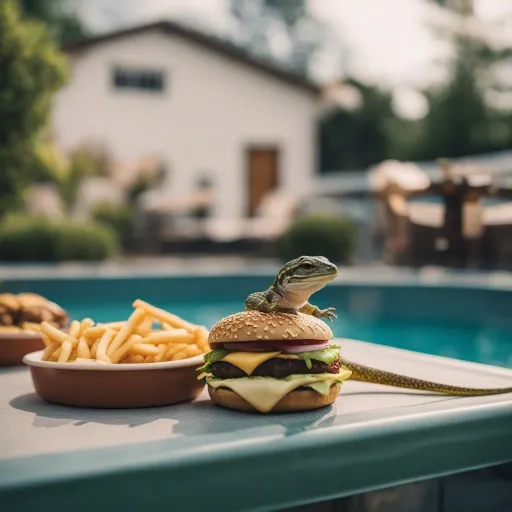
Dangers of Feeding Backyard Lizards
While it may be tempting to provide additional food for backyard lizards, there are potential risks and drawbacks to consider:
Dependency on Human-Provided Food
Feeding backyard lizards can create a dependency, causing them to rely solely on human-provided food. This can disrupt their natural foraging behavior and affect their ability to find food independently. It is important to strike a balance by providing supplementary food while still encouraging lizards to forage for their own sustenance.
Health Risks of Inadequate Diet
Inadequate diet can lead to health issues for backyard lizards. Lizards that solely rely on commercial diets may not receive the necessary variety of nutrients, potentially leading to deficiencies. Conversely, providing an excessive amount of fatty or sugary foods can lead to obesity and other health complications. It is crucial to ensure a balanced diet that includes a variety of insects, vegetation, and occasional supplements to maintain the lizard’s health.
Final Thoughts
In conclusion, understanding the feeding habits of backyard lizards is key to providing them with a suitable environment and ensuring their well-being.
By incorporating insects, vegetation, and water sources, you can attract and nurture these fascinating reptiles in your own backyard.
Remember to respect their natural diet and habits while enjoying their presence as valuable contributors to your outdoor ecosystem.



